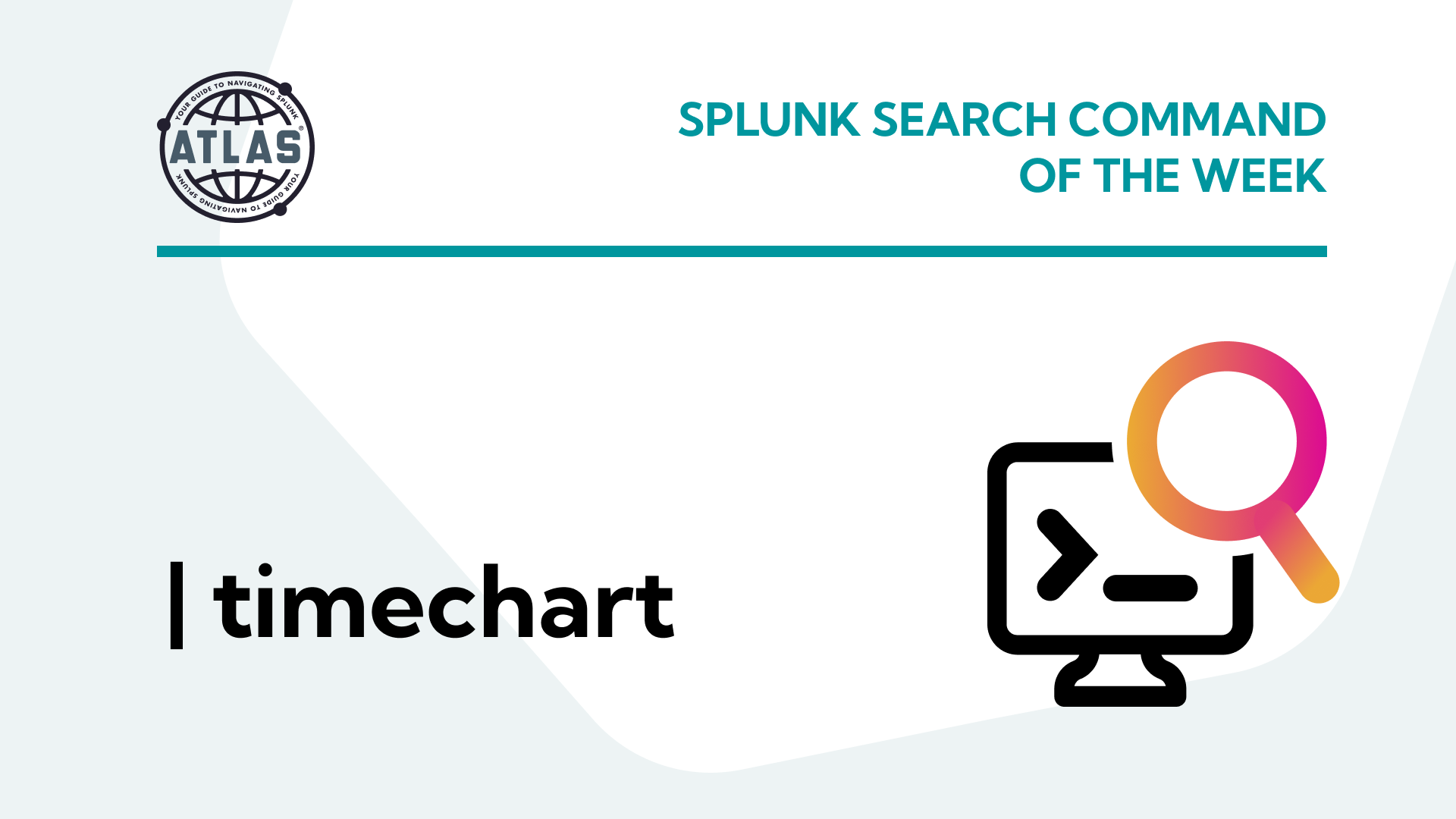1. Solved: Stats by hour - Splunk Community
I would like to create a table of count metrics based on hour of the day. So average hits at 1AM, 2AM, etc. stats min by date_hour, avg by date_hour, max by ...
I would like to create a table of count metrics based on hour of the day. So average hits at 1AM, 2AM, etc. stats min by date_hour, avg by date_hour, max by date_hour I can not figure out why this does not work. Here is the matrix I am trying to return. Assume 30 days of log data so 30 samples per e...
2. How to get stats by hour and calculate percentage - Splunk Community
Mar 1, 2022 · I am trying to get the an hourly stats for each status code and get the percentage for each hour per status. Not sure how to get it.
Hi There, I am trying to get the an hourly stats for each status code and get the percentage for each hour per status. Not sure how to get it.my search | | bucket _time span=1h | stats count by _time http_status_code | eventstats sum(count) as totalCount | eval percentage=round((count/totalCount),3...
3. Solved: Data visualization over the day (by hours) - Splunk Community
Aug 24, 2020 · I am stuck with a dashboard which splits the events by hours of the day, to see for example the amount of events on every hours (from 00h to 23h)
Hi there, I know it sound pretty easy, but I am stuck with a dashboard which splits the events by hours of the day, to see for example the amount of events on every hours (from 00h to 23h) My request is like that: index=_internal | convert timeformat="%H" ctime(_time) AS Hour | stats count by Hour |...
4. How to search for Count by day by hour or half hou...
I need to get count of events by day by hour or half-hour using a field in splunk log which is a string whose value is date.
I need to get count of events by day by hour or half-hour using a field in splunk log which is a string whose value is date - e.g. eventPublishTime: 2022-05-05T02:20:40.994Z I tried some variations of below query, but it doesn't work. How should I formulate my query?index=our-applications env=prod...
5. Solved: group search results by hour of day - Splunk Community
Apr 13, 2021 · I want a chart that tells me how many counts i got over the last 7 days grouped by the hour of the day for a specific user and status number.
Hi splunk community, I feel like this is a very basic question but I couldn't get it to work. I want to search my index for the last 7 days and want to group my results by hour of the day. So the result should be a column chart with 24 columns. So for example my search looks like this:index=myIndex...
6. How to search the count and average count of events per hour?
Aug 14, 2015 · This will count the events per hour between 48 hours ago to 24 hours ago. Change this as you see fit or remove earliest and latest.
Hello Please can you provide a search for getting the number of events per hour and average count per hour?
7. How to find an Average Count over an hour in 5 min... - Splunk Community
Apr 10, 2019 · Im trying to find out and average count over and hour in 5 min buckets to see any large uptrends in count in general. Any advice etc would be amazing.
Hi Experts! So I have an issue with GC cycles and we have this logged in splunk. I have used the below query which gives me the minor occurrences count overall (and works fine ) sourcetype=system*process*gc* "[GC pause" | rex field=source "print.prod..?(?.?)\/" | rex field=source "system_print(?.*?)...
8. Stats per hour? - Splunk Community
Feb 12, 2016 · Set up a report showing number of users with more than nnnn events per hour. I though this query would give me per hour stats, for users with more than 3 ...
So, I was looking at this: https://answers.splunk.com/answers/205556/how-to-set-up-an-alert-if-the-same-error-occurs-mo.html Started with that to set up a report showing number of users with more than nnnn events per hour. I though this query would give me per hour stats, for users with more than 3 ...
9. Is there a way to display Count per hr for last 24... - Splunk Community
I have a requirement to be able to display a count of sales per hr for the last 24 hrs (with flexibility to adjust that as needed), but also to show the ...
Hi Splunk Gurus, Hoping someone out there might be able to provide some assistance with this one. I have a requirement to be able to display a count of sales per hr for the last 24 hrs (with flexibility to adjust that as needed), but also to show the average sales per hr for the last 30 days as an o...
10. Report hourly max count events per day over a month - Splunk Community
| timechart span=1h count as HourlyCount | timechart span=1d max(HourlyCount) · | stats count AS hit BY date_hour, date_mday | stats max(hit) BY date_hour, ...
Hello, I m trying to get the hour per day which gets the most hits on my application over a month but having some issues to get the right data output. I would like to get a table report which would have: DAY1 HOURX MaxEventNumber DAY2 HOURX MaxEventNumber .... I tried the following queries but none ...
11. Getting Average Number of Requests Per Hour - Splunk Community
So, this search should display some useful columns for finding web related stats. ... Yes, but if I increase the span to 1d shouldn't I then get the average count ...
I've read most (if not all) of the questions/answers related to getting an average count of hits per hour. I've experimented with some of the queries posted by fellow splunkers and for the most part they've worked when using small queries (i.e. charting the two fields Total Count and Average Count ....
12. Distinct count by hour by type - Splunk Community
Apr 5, 2017 · This correctly produces the number of distinct vehicles on a particular route by hour. But now assume that there are two different vehicle types: bus and ...
I currently have a search: ... | eval hour=strftime(_time,"%H") | streamstats time_window=1h dc(vehicle_id) AS dc_vid | timechart max(dc_vid) by hour fixedrange=false This correctly produces the number of distinct vehicles on a particular route by hour. But now assume that there are two different ve...
13. How to produce hourly stats by day of the week in Pacific Time?
May 29, 2019 · ... count by hour. I ran this year to date. Things are close but not ... Splunk, Splunk>, Turn Data Into Doing, Data-to-Everything, and D2E ...
I've been asked to produce a report with typical hourly volumes for our application on Fridays. So I put together this snappy search. index=prod event_name="LOGIN" date_wday=friday | eval hour=strftime(_time, "%H") | timechart cont=false span=1d limit=0 useother=false count by hour I ran this...
14. Calculating events per slice of time - Implementing Splunk (Update)
Calculating average events per minute, per hour shows another way of dealing with this behavior. ... stats count by _time. The bucket command rounds... Previous ...
Implementing Splunk Second Edition
15. How to create a chart to show count of events by hour over days in a week?
Jun 27, 2018 · index=_internal | timechart count BY sourcetype | table _time splunk* mongo* * ... | stats count as hourcount by hour | bin hour as day span=1d | ...
Below is the search query i used in order to get a similar chart but the hours are not consecutive, as shown in the Legend's table on the right side. What i have in mind was to create a chart that displays the count of high severity events by hour in a day for a week and have the chart start on a Mo...
16. Using the timechart Command - Kinney Group
Aug 14, 2024 · The timechart command in Splunk is used to create a time series chart of statistical trends in your data. It is particularly useful for analyzing time-based ...
Explore the functionalities and usage of Splunk's timechart command to create visual representations of time-based data.

17. Calculate average count by hour & day combined - Splunk Community
Jul 26, 2018 · I am wanting to calculate the average count of incidents per hour/day (ie Mon-07:00, Mon-08:00) over a 12 month period.
Hi, I am wanting to calculate the average count of "incidents" per hour/day (i.e. Mon-07:00, Mon-08:00) over a 12 month period. I am using a date field that is not my timestamp. This is the syntax I have so far, any help would be appreciated. sourcetype=sourcetype1 | eval log_day=strftime(strptime(D...
18. Count of events from yesterday and today - Splunk Searches
... hours and another showing the number of events ingested in the previous 24 hour period ... stats count by _time | eval window="Yesterday" | append [search index ...
This Splunk search will provide a timechart that shows two series, one demonstrating the number of events ingested in the most recent 24 hours and another showing the number of events ingested in the previous 24 hour period. The results of this search are best viewed as a line chart and will allow you to compare data ingest of today compared with yesterday.
19. stats by date_hour and by another field add zero c... - Splunk Community
Nov 17, 2017 · I want this search to return the count of events grouped by hour and by "other_field" for alerting. And then compare it with data of the last day.
Hello, I'm working on a search to report the count of data by hour over any specified time period. At the moment i've got this on the tail of my search: ... | stats dc(my_field) by other_field, _time I want this search to return the count of events grouped by hour and by "other_field" for alerting....
20. How to search for a count > X in one hour increments by IP?
Jun 21, 2018 · ... stats count by IP _time | where count > 1000. View solution in ... Splunk, Splunk>, Turn Data Into Doing, Data-to-Everything, and D2E ...
How would I build a query to search for any time there is a count of > X amount in one-hour increments by IP? For example, I'd like to see the exact count by IP if in the past 7 days there were> 1000 hits by that IP within each hour range. Thx
21. Using 'group by' For Multiple Fields in Splunk - OpenObserve
May 5, 2024 · index=web_logs status=200 | stats count by hour, page. With this query, Splunk will group the data by both the hour and the page visited ...
Unlock advanced data insights in Splunk with 'group by' for multiple fields.
